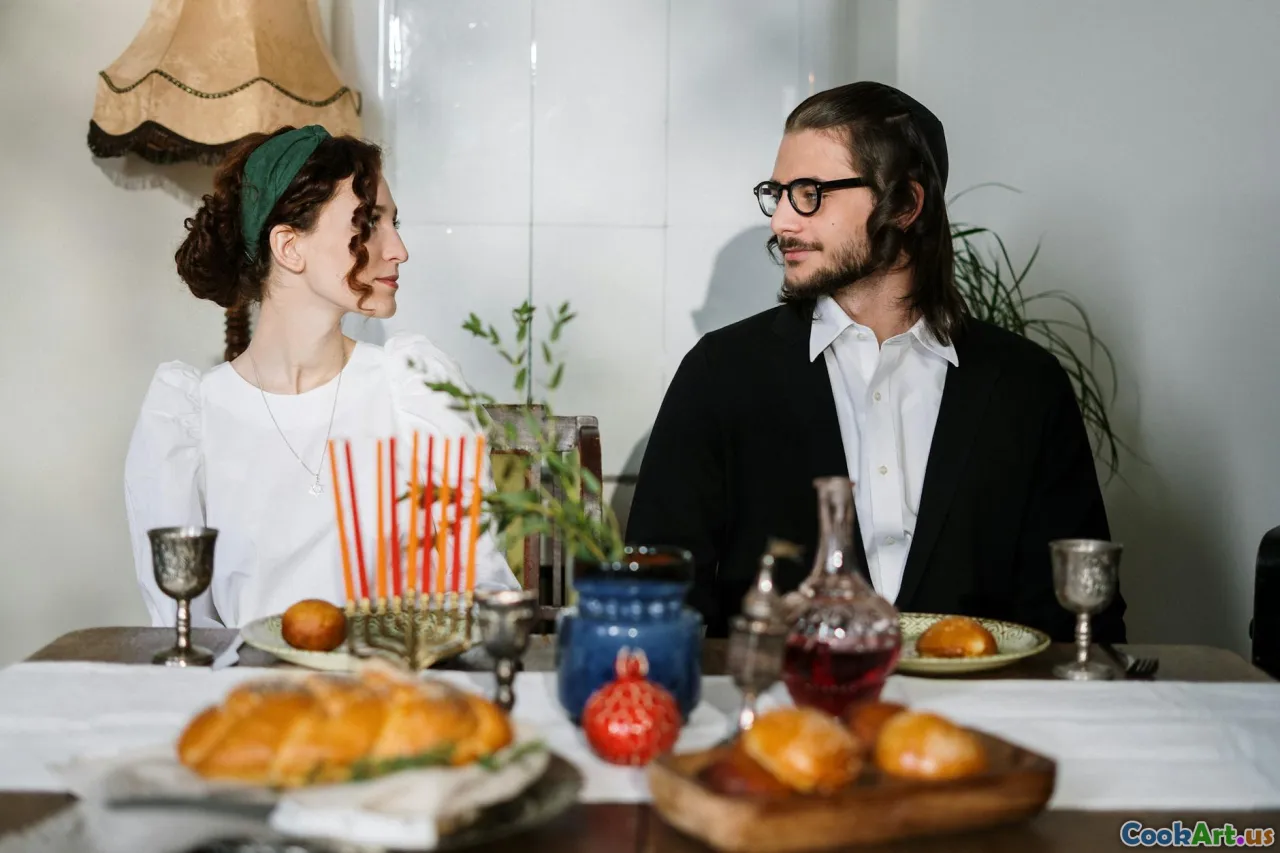The Role of Challah in Jewish High Holiday Meals
8 min read Explore how challah weaves tradition, symbolism, and sensory richness into Jewish High Holiday meals, elevating spiritual and communal experiences. May 16, 2025 09:00
The Role of Challah in Jewish High Holiday Meals
Imagine a table bathed in soft candlelight, the air filled with the warm, sweet aroma of freshly baked bread. This is not just any meal—it's a sacred gathering during the Jewish High Holidays, where every element, especially challah, carries profound symbolism and tradition. Challah, with its golden, braided beauty, is more than a bread; it is a vessel of history, spirituality, and community that elevates the High Holiday experience.
The Cultural and Historical Significance of Challah
Challah's roots stretch deep into Jewish history, with origins tracing back to ancient times when bread symbolized sustenance and divine blessing. The word "challah" itself is derived from the Hebrew term for a portion of dough set aside as an offering, reflecting its sacred status. Historically, the braiding of challah represents unity, interconnectedness, and the intertwining of spiritual and physical worlds.
During the High Holidays—Rosh Hashanah (the Jewish New Year) and Yom Kippur (the Day of Atonement)—challah takes on additional layers of meaning. The act of braiding and sharing challah embodies community solidarity and a collective hope for renewal, forgiveness, and divine favor.
Challah in Rosh Hashanah: A Sweet Symbol of Prosperity
As the Jewish New Year approaches, the challah on the festive table is often transformed into a sweet, honey-glazed crown of bread. This variation, called "Rosh Hashanah challah," is infused with honey, symbolizing the wish for a sweet year ahead. Its rich aroma of honey and warm spices invites reflection and anticipation.
The visual appeal of this challah is striking—its golden crust glistening with a brush of honey or egg wash, often decorated with symbols like pomegranates or apples, which are traditional Rosh Hashanah motifs representing fertility and abundance.
Texturally, the bread is soft yet resilient, with a slightly chewy crumb that complements the sweetness of the honey. When broken, the aroma fills the room—an intoxicating blend of toasted dough, sweet honey, and a hint of cinnamon—evoking feelings of hope and renewal.
Yom Kippur and the Breaking of the Fast
Yom Kippur concludes with a communal breaking of the fast, where challah plays a central role once again. The bread served during this time is often plain but richly textured, symbolizing humility and gratitude. The act of breaking challah after a day of fasting signifies spiritual nourishment and physical replenishment.
Sharing challah during these moments fosters a sense of unity and reflection among participants, reminding them that forgiveness and renewal are achieved through communal effort and divine grace.
The Braiding Ritual: A Sacred Art
The process of braiding challah is itself a ritual, often performed with mindful intention. Many families have cherished recipes passed down through generations, each with subtle variations that carry personal and cultural significance.
Braiding is more than aesthetics; it is a physical act that embodies interconnectedness—three-strand or six-strand braids can symbolize various spiritual concepts, such as the six days of creation or the intertwining of human and divine.
In some traditions, each braid is dedicated to a different blessing or hope—peace, health, prosperity—making the act of baking and sharing challah a deeply spiritual practice.
Sensory Experience: The Taste, Smell, and Texture
The sensory journey of challah during the High Holidays is profound. The aroma of baking challah—rich, warm, inviting—permeates the home, evoking memories of family gatherings and sacred traditions.
The crust, often golden and slightly crisp, contrasts beautifully with the soft, airy interior. When dipped in honey or spread with sweet butter, it becomes an indulgent, comforting treat that enhances the festive mood.
The taste profile balances the subtle sweetness of the dough, the richness of eggs, and the aromatic accents of spices like cinnamon or cardamom. This harmonious blend elevates the bread from mere sustenance to a meaningful ritual item.
Personal Reflections and Modern Interpretations
In my own family, challah during the High Holidays is more than a tradition; it’s a symbol of hope and continuity. I remember watching my grandmother carefully braid the dough, her hands steady but gentle, whispering blessings as she worked. When the bread came out of the oven, its aroma was a tangible promise of a new beginning.
Today, many bakers innovate while respecting tradition—adding ingredients like dried fruits, nuts, or even saffron to infuse the challah with new flavors, keeping the ritual vibrant and relevant.
Challah’s Role in Community and Connection
Beyond the kitchen, challah acts as a bridge connecting generations, communities, and faith. Sharing this bread during the High Holidays fosters a sense of belonging and collective aspiration.
Community challah baking events, where diverse groups come together to knead, braid, and bake, embody the spirit of unity that these holidays emphasize. Each loaf, shaped with care, becomes a symbol of hope, renewal, and shared identity.
Conclusion: More Than Bread—A Spiritual Anchor
Challah, in its beautiful braids and sweet aroma, embodies the heart of Jewish High Holiday meals. It is a tangible link to history, a vessel for prayers and blessings, and a symbol of hope and renewal.
As we gather around the table during these sacred days, the act of breaking challah reminds us of our interconnectedness—spiritually, culturally, and emotionally. It is a sacred ritual that transforms ordinary ingredients into a profound expression of faith and community.
Whether you observe these holidays or simply appreciate the artistry and symbolism of challah, embracing this tradition invites you into a deeper understanding of the cultural tapestry that makes Jewish festive meals so meaningful. In the end, challah is not just bread; it is a celebration of life, hope, and the enduring power of tradition.









